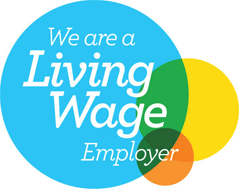Factsheet: Paternity Leave for Employees
Paternity Leave and parental rights for fathers and partners at work
This factsheet is aimed at fathers, expectant fathers, and also partners of expectant mothers. If your partner is expecting or has recently had a baby and you are unsure of your rights at work, our factsheet will help.
- Time off to attend antenatal appointments
- Emergency time off for dependants
- Paternity Leave
- Shared Parental Leave
- Keeping in touch days during Shared Parental Leave
- Rights and returning from SPL
- The right to ask for flexible working
- Parental Leave
Time off to attend antenatal appointments
If you are an employee or agency worker, who has a qualifying relationship with the pregnant woman or her expectant child, you can take unpaid time off work to accompany her to up to two antenatal appointments.
If you are an employee this is a ” day one” right. If you work for an agency, you must have been doing the same job for at least twelve weeks, with the same hirer without any breaks between your assignments.
Emergency time off for dependants
You will be entitled to take emergency time off if, for example:
- You need to make arrangements for the care of a dependant who is ill or injured
- A dependant falls ill, gives birth or is injured and needs your assistance
- There is a sudden disruption of arrangements for the care of a dependant
- There is an unexpected incident at school involving your child
- If your dependant dies
You should let your employer know about the situation as soon as is reasonably practicable, and your employer should allow you to take the time that is necessary to deal with the emergency. Time off for dependants is usually unpaid.
Paternity Leave
Provided that you have been employed for 26 weeks or more prior to the 15th week before your baby is due – and provided that you have given notice 15 weeks before the due date – you are entitled to take up to two weeks’ paternity leave after your baby is born. This must be taken within 8 weeks of the birth.
During paternity leave you are entitled to the benefit of all of the terms and conditions of employment which would have applied had you not been absent, except for the terms and conditions relating to pay. Instead, you will be entitled to receive statutory paternity pay which is currently £184.03 per week or 90% of your average weekly earnings if that is lower.
Shared Parental Leave
Since 2015, it has been possible for mothers to convert up to 50 weeks of their maternity leave and 37 weeks of their statutory maternity pay into Shared Parental Leave (SPL) and pay, to be shared with their partner.
You are likely to be eligible for Shared Parental Leave if you satisfy the ‘continuity of employment test’. To satisfy this test, you must have been employed for 26 weeks by the end of the 15th week before the expected week of childbirth (EWC) and must still be working at the start of each leave period.
Your partner must also satisfy the employment and earning test by having worked at least 26 weeks and earned at least £30 a week on average in any 13 weeks within the 66 weeks leading up to the EWC.
If you wish to take Shared Parental Leave, you may need to submit up to five notices to your employer. Your partner is required to give at least 8 weeks’ notice to curtail her statutory maternity leave. Any SLP must be “booked” at least 8 weeks before the start date of the first period of SLP.
While SLP may be taken at any time, from the date of birth to the day before the child’s first birthday, your partner cannot take SLP until she has completed her two week compulsory maternity leave. If you take SLP first you will lose your entitlement to Ordinary Paternity Leave and, therefore, it is recommended that you take OPL before taking SLP to avoid losing this entitlement.
Keeping in touch days during Shared Parental Leave
You may have up to 20 SPL keeping-in-touch days, known as SPLIT days, without bringing your SLP to an end. This is additional to the ten days that a mother may take. Your employer is not obliged to agree to SPL and keeping-in-touch days.
Rights and returning from SPL
If the total amount of statutory leave taken is less than 26 weeks, including the SPL, you retain the right to return to the same job. Where either more than 26 weeks were taken or the SLP immediately followed a period of unpaid parental leave of more than four weeks, you have the right to return to the same job. However, if this is not practicable, you have a right to a job that is suitable and appropriate in light of the nature of the work set out in your employment contract, capacity and place of work.
The right to ask for flexible working
All employees have the right to request flexible working. Employers must give proper consideration to the request using the required statutory procedures.
Parental Leave
If you are a parent with at least one year’s service, you are entitled to take up to 13 weeks’ parental leave per child (or 18 weeks for disabled children) prior to their 5th birthday. You must have given your employer at least 21 days’ written notice of the date that you wish to start any period of parental leave and you must say how much leave you want to take.
Your employer is allowed to ask you to postpone your parental leave if it would cause ‘undue disruption’ to the business. Your employer may also only allow you to take 4 weeks’ parental leave at one time. Parental leave is usually unpaid.
If you want to know more, contact the Martin Searle Solicitors Employment Team today on 01273 609911, or email info@ms-solicitors.co.uk.


